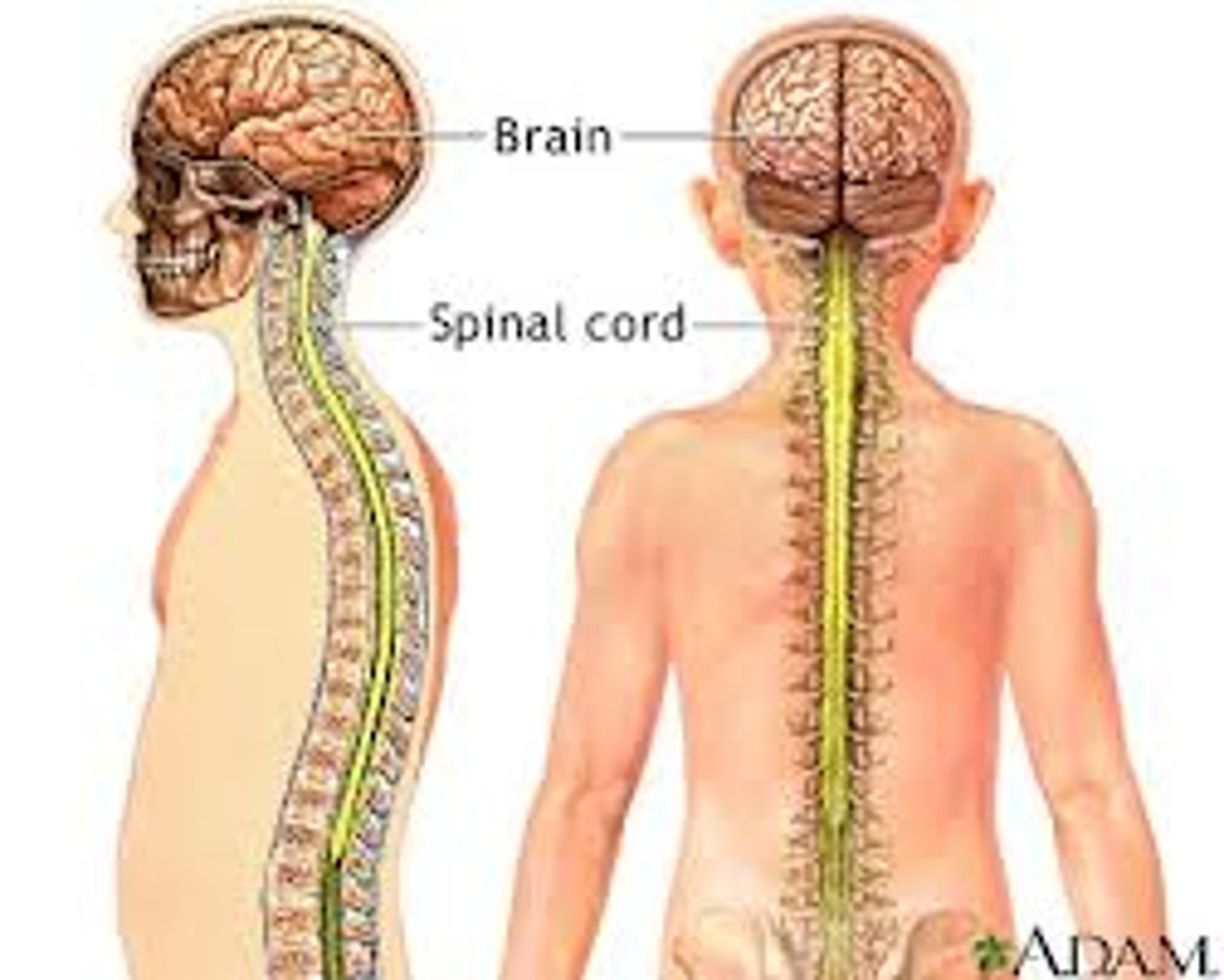Body Systems Functions, Body systems functions
1/30
There's no tags or description
Looks like no tags are added yet.
Name | Mastery | Learn | Test | Matching | Spaced |
|---|
No study sessions yet.
31 Terms
Parts of the Integumentary system
This body system consists of skin, hair, and nails.
Function of integumentary system
This system forms the body's protective outer covering and contains thousands of sensory receptors. It also plays a vital role in body temperature regulation.
Parts of the Endocrine System
This body system consists of the hypothalamus, pituitary gland, thyroid, parathyroid, thymus, adrenals, pancreas, and gonads.
Function of the endocrine system
This system regulates long term physiologic process such as growth, sexual development, sleep and reproductive cycles.
Function of the Respiratory System
This body system regulates the exchange of oxygen and carbon dioxide between the body and its surrounding atmosphere. It also creates the sound of our voice.
Parts of the respiratory system
This body system consists of sinuses, nose, pharynx, larynx, trachea, bronchus, and lungs
Function of the Muscular System
The contractions of this body system applies tension to our bones, causing us to move and maintain an upright posture
Parts of the muscular system
skeletal muscles, tendons
Function of the Skeletal System
This body system provides the structure and framework for the body, protects vital organs, works with our muscular system to move body parts. It also stores calcium and other minerals and are the site of blood cell production.
Parts of the skeletal system
bones, joints, cartilages, ligaments
Function of the Nervous system
This body system is the communication and control center, sending information through nerve impulses to coordinate many of the responses and activities of the other body systems.
Parts of the nervous system
brain, spinal cord, nerves, sensory receptors
Function of the Digestive System
This body system breaks down food into usable nutrients which are absorbed into the blood and packages and eliminates solid waste from our bodies
Parts of the digestive system
mouth, salivary glands, esophagus, liver, gallbladder. pancreas, stomach, small intestine, large intestine, anus
Function of the reproductive System
This body system regulates and controls the reproductive process
Parts of the reproductive system
male: testes, penis, prostate, seminal vesicle, vans deferens
female: ovaries, fallopian tubes, uterus, vagina, breasts, vulva
Function of the urinary System
This body system cleanses our blood of metabolic wastes which are eliminated in urine. It also helps to regulate pH and electrolyte balances and plays a major role in regulating body fluid.
Parts of the urinary system
kidneys, ureter, urinary bladder, urethra
Function of the Cardiovascular system
This body system pumps blood throughout the body, carrying oxygen and other nutrients to our cells.
parts of the cardiovascular system
heart, blood, capillaries, veins, arteries
Enables body to move.
Allows the heart to pump blood.
Pushes food through the digestive tract.
Muscular system
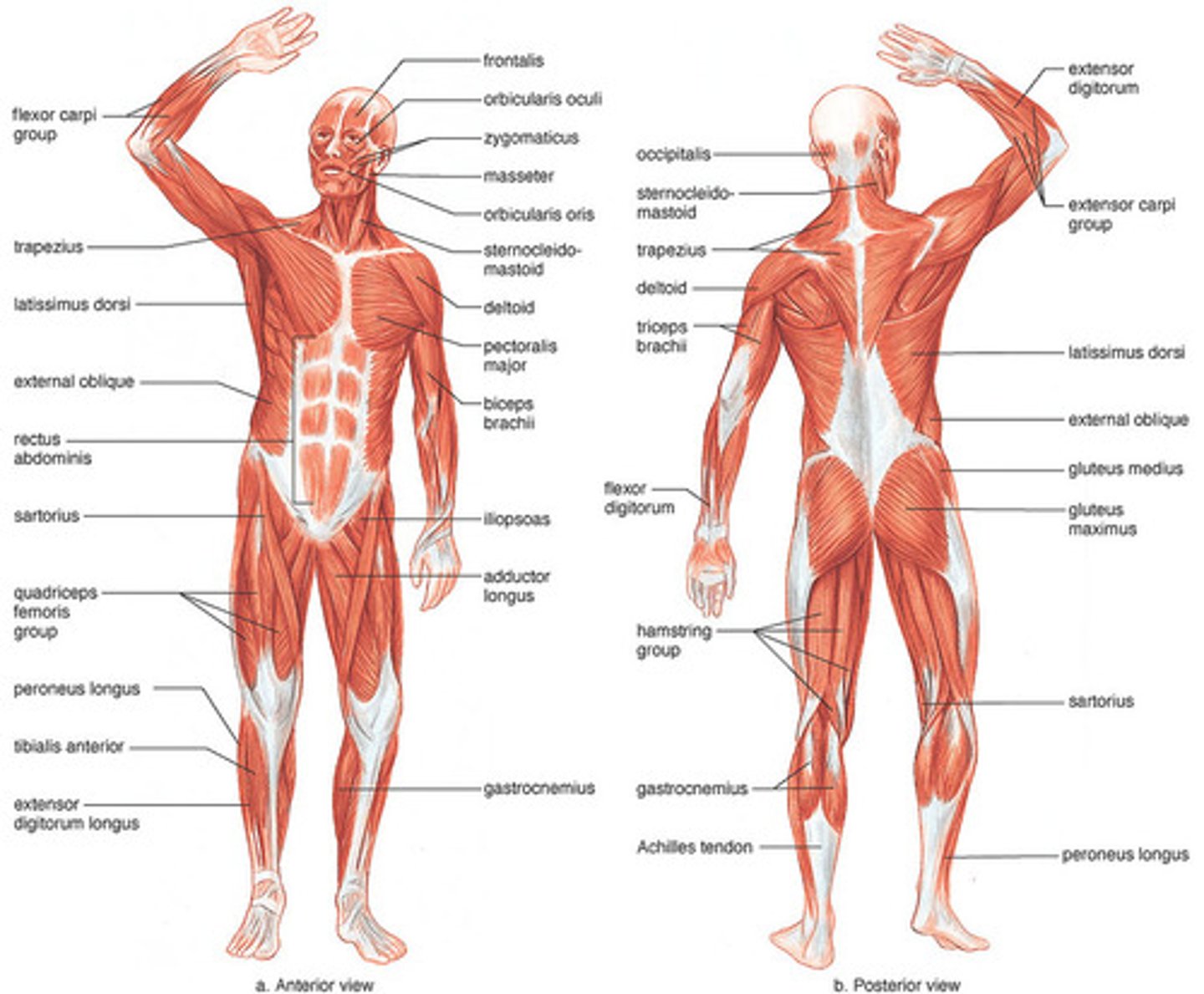
Shapes/supports the body and protects major organs.
Works with the muscles to enable movement.
Creates blood cells.
Skeletal system
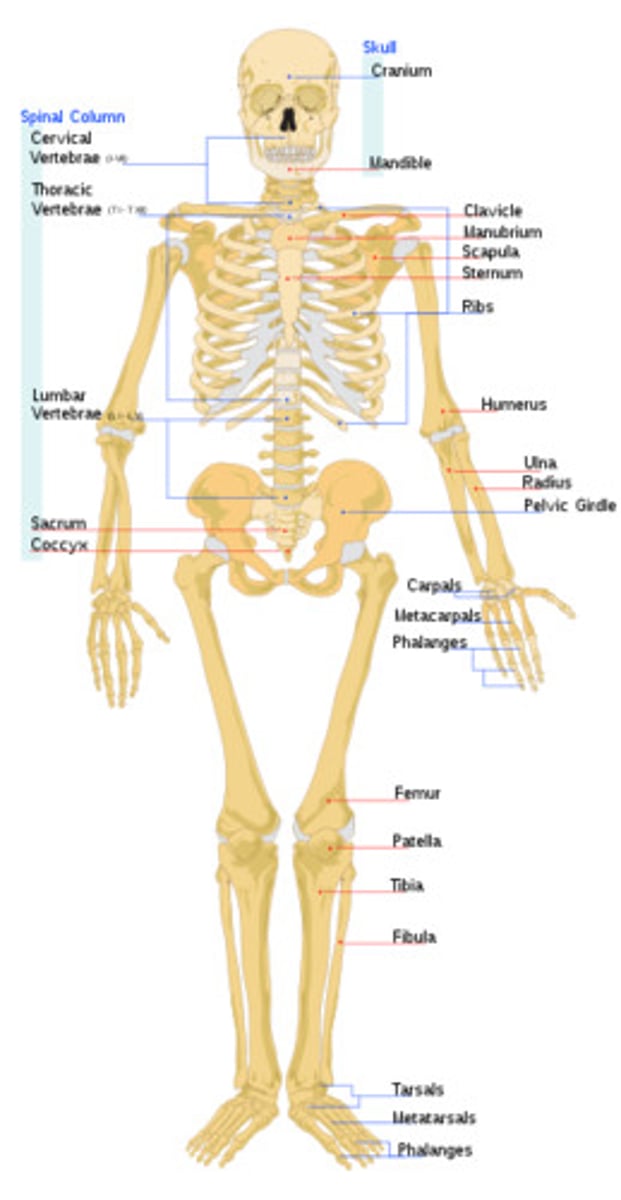
Takes oxygen into the body, and removes carbon dioxide.
Respiratory system
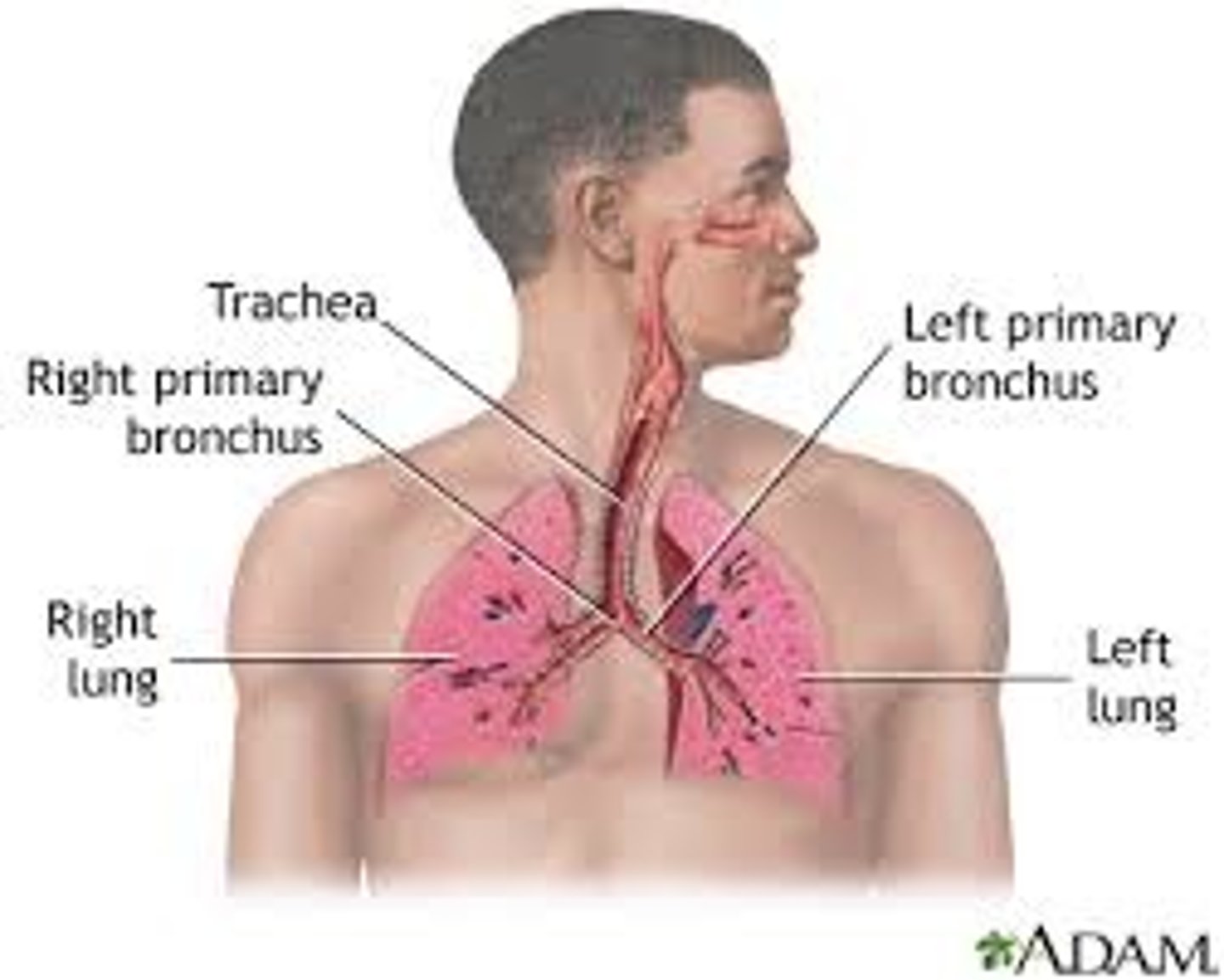
Carries oxygen and other nutrients throughout the body. Also helps fight disease and infection
Circulatory system
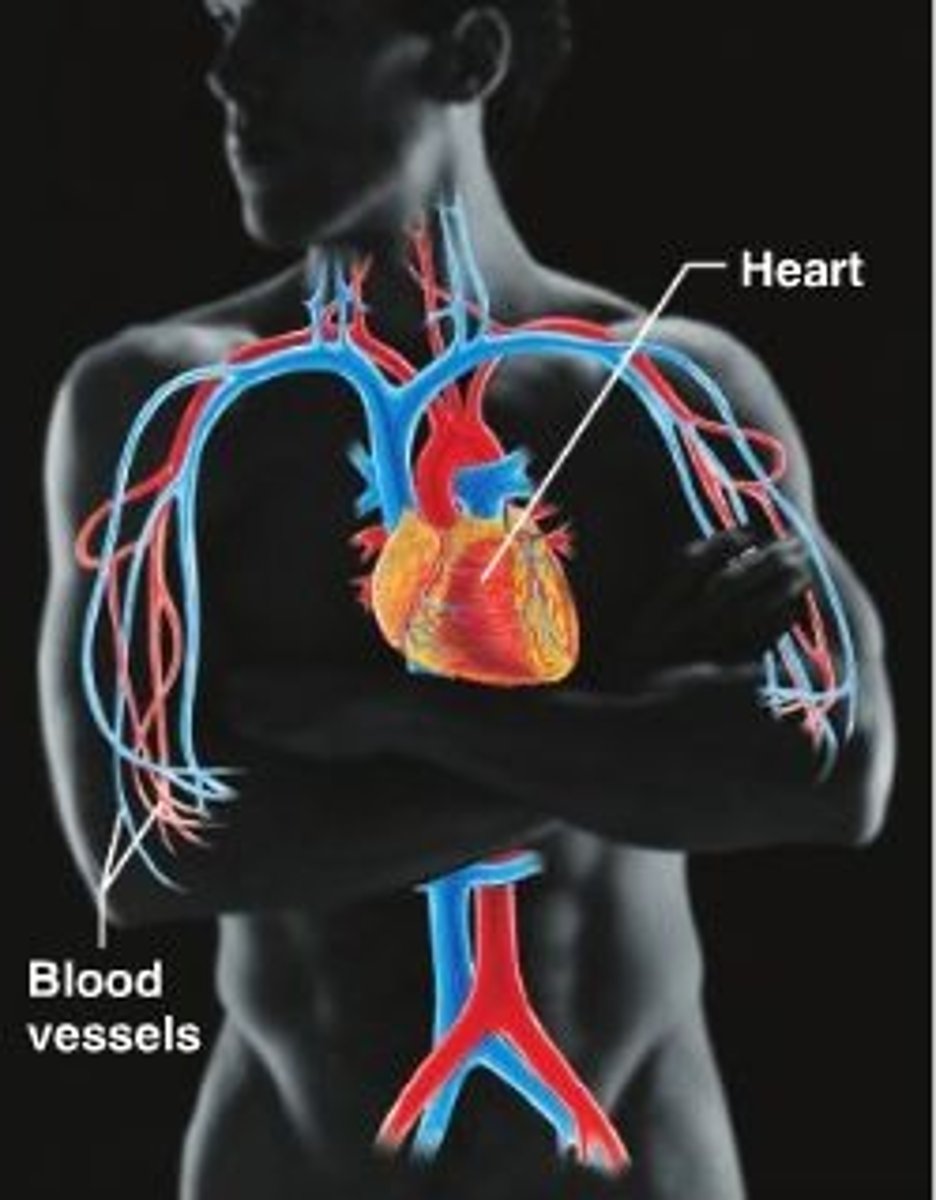
Takes in/breaks down food, and absorbs the nutrients.
Digestive system
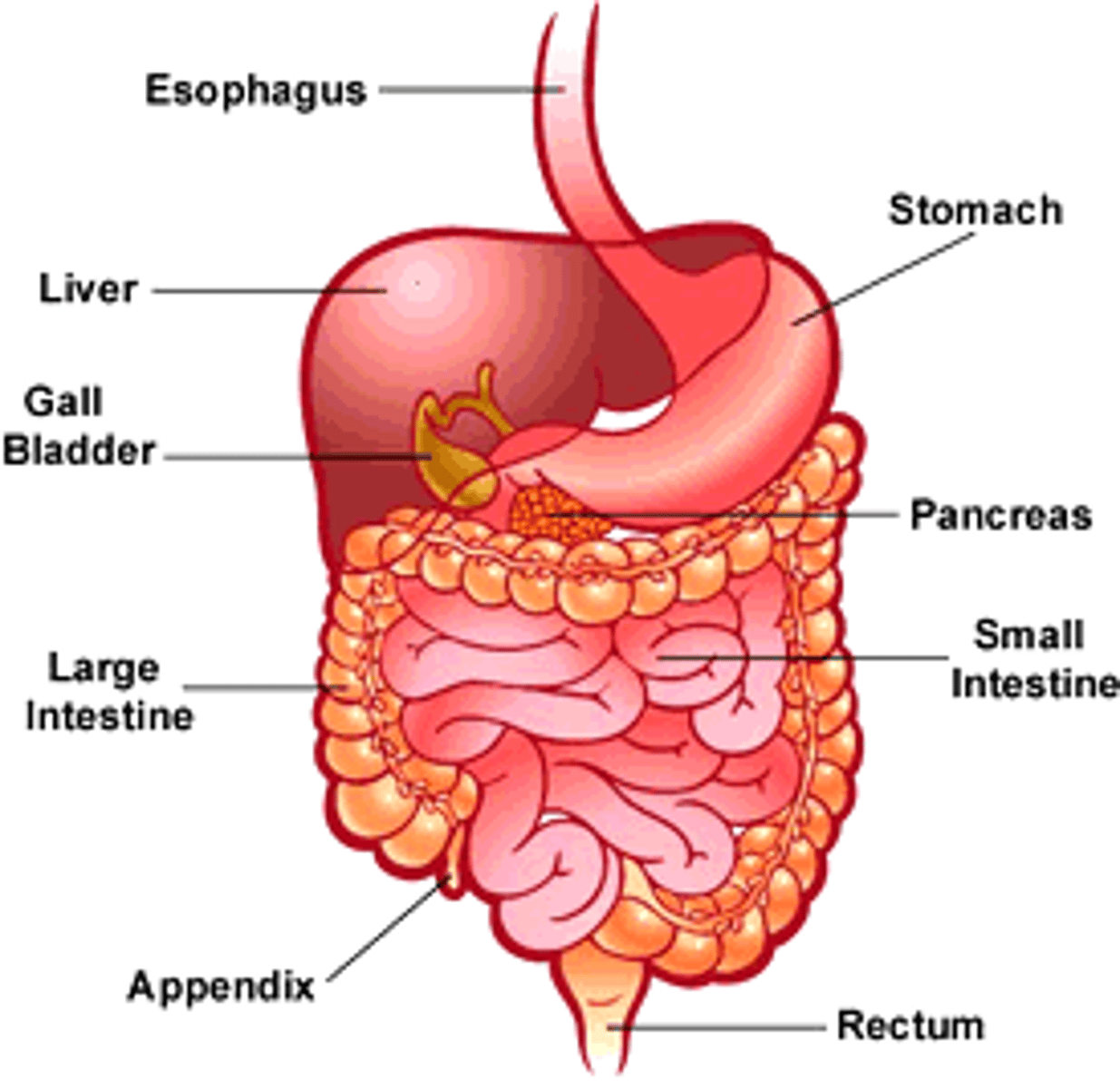
Removes waste from the body. Is made up of any organs that remove waste.
Excretory system
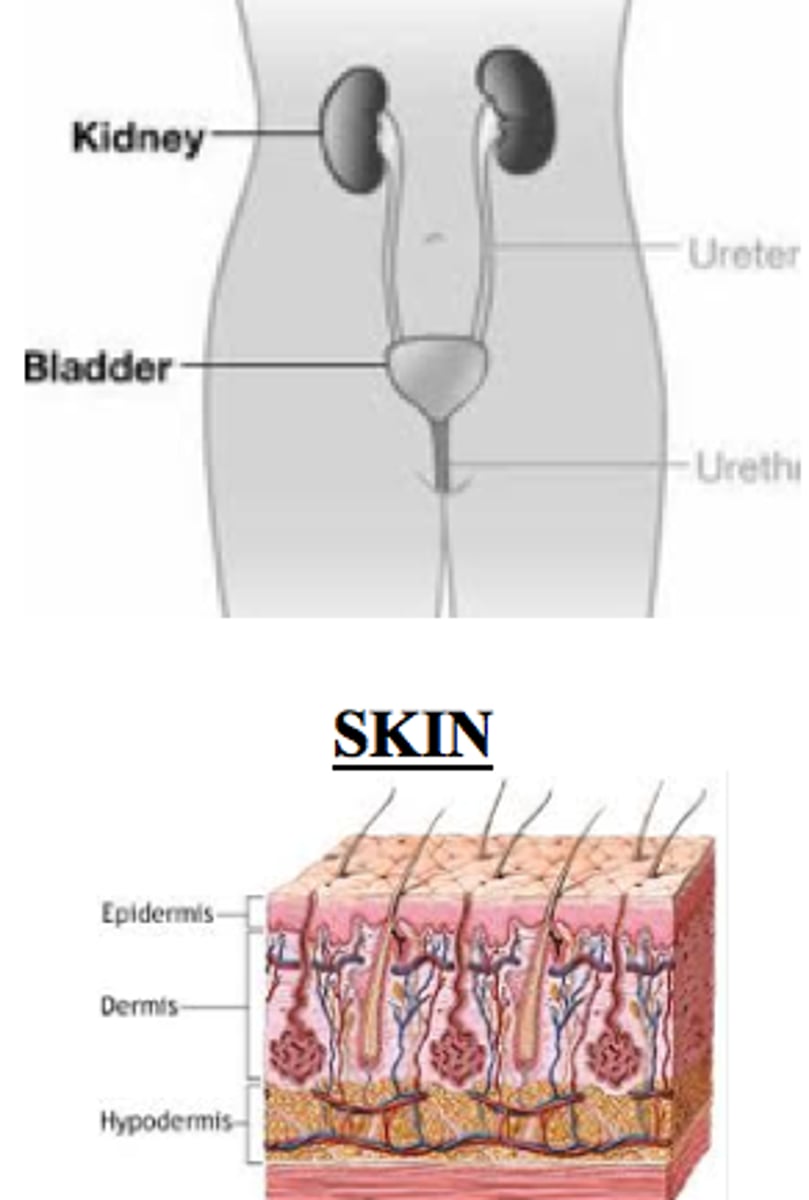
Filters waste from the blood to be removed as urine.
Urinary system
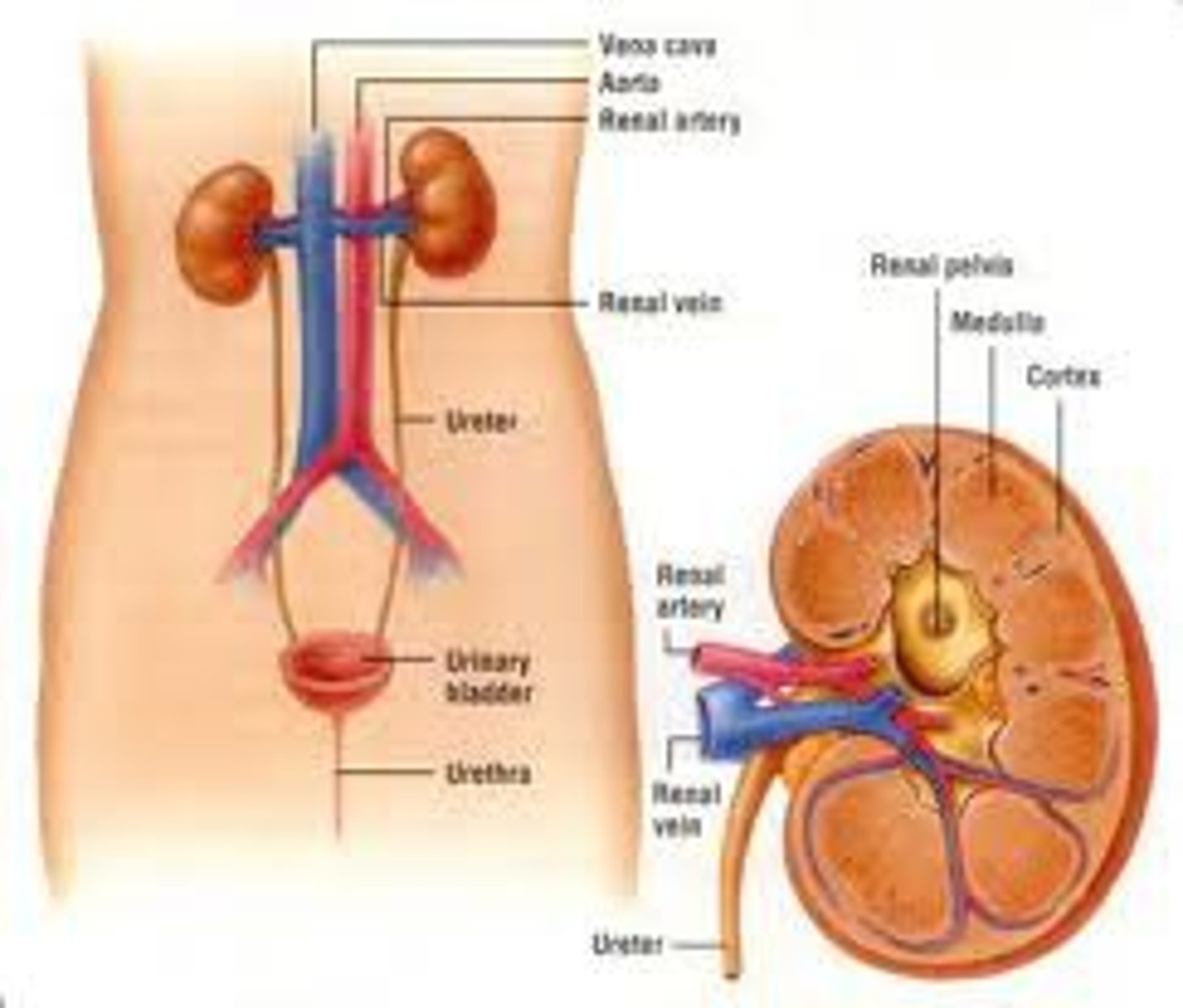
Protects the body from injury, infection, and UV rays. Helps regulate body temperature. Keeps fluids inside the body.
Integumentary system
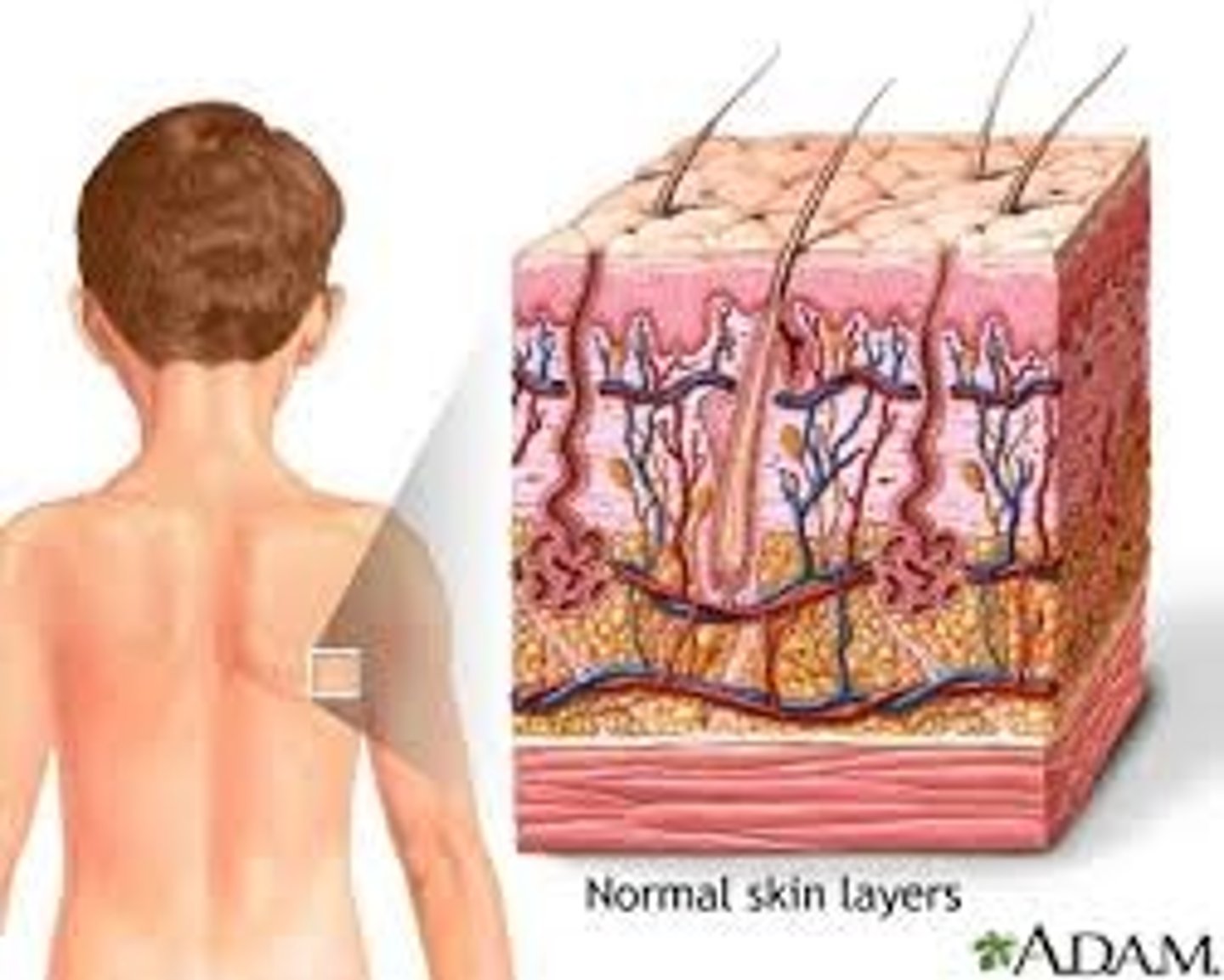
Produces sex cells to reproduce offspring.
Reproductive system
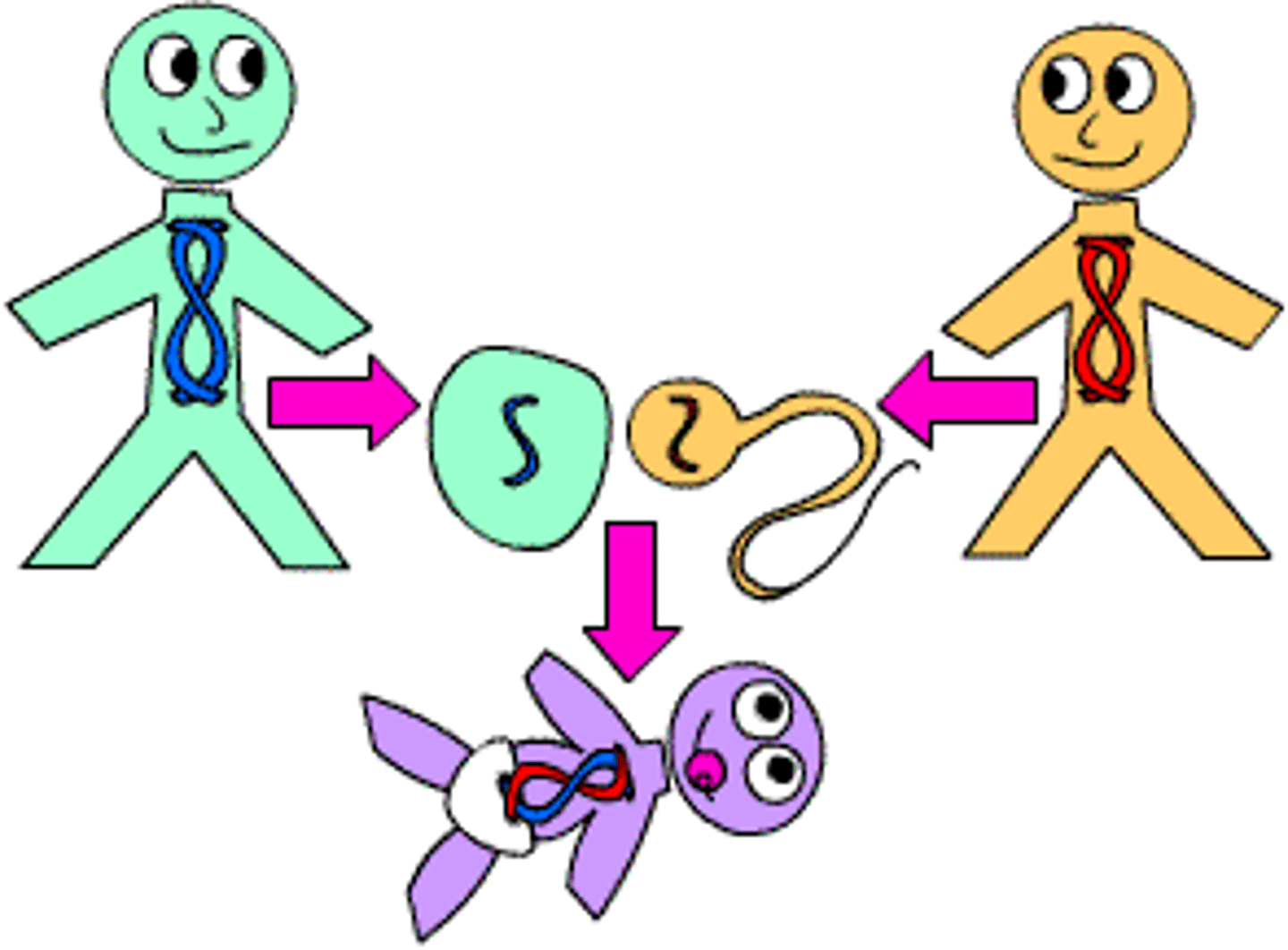
Maintains homeostasis using hormones.
Endocrine system
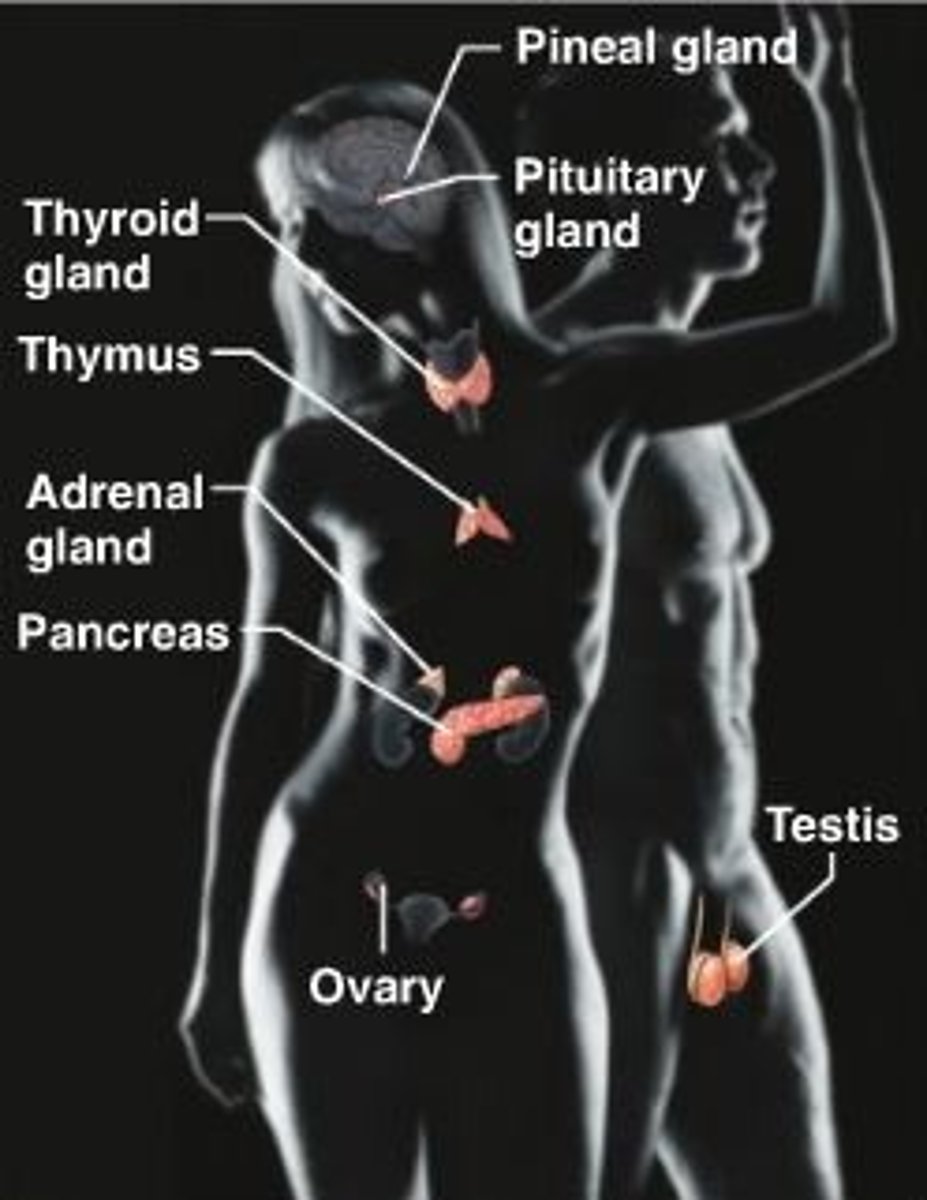
Controls most other body functions.
Nervous system
